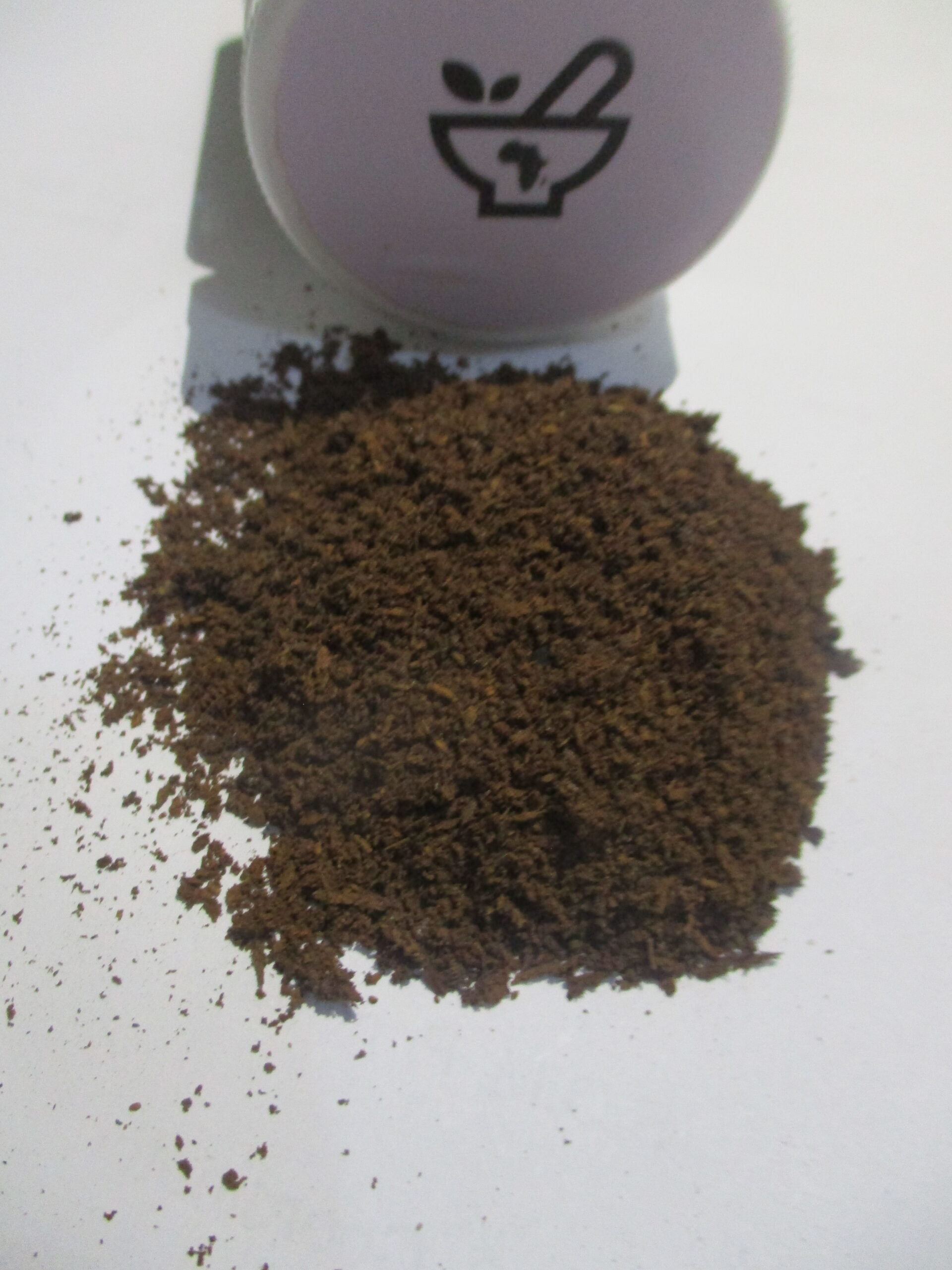Family: Myrsinaceae
Scientific name: Rapanea melanophloeos
Authority: (L.) Mez
Synonym: Myrsine melanophloeos (L.) R.Br. ex Sweet
Zulu names: inhluthe, umhluthi wentaba, isicalabi, isiqalaba, isiqalaba sehlathi, umaphipha, umaphipha igxolo, umaphipha ikhubalo, uvuka kwabafileyo khubalo, ikhubalwane, ishashakazane, isijojokazane
Other names: Cape beech, Rapanea (English), boekenhout, kaapse boekenhout, rooiboekenhout, swartbas (Afrikaans)
Description: R. melanophloeos is a large tree that grows in forest, along forest margins and in bush clumps. It has a straight greyish brown trunk, leaves that are dark green above and light green below and are clustered towards the ends of the branches, many small creamy coloured flowers, and small round fruits that turn purple when ripe.
Uses:
- The bark is mixed with Pterocelastrus echinatus (ugobandlovu) used to make an infusion to treat general body pains.
- The bark infusion is taken to remedy tearfulness.
- The bark decoction is taken as a body wash for removing bad luck and isichitho or isidina.
- The bark is used for heart strengthening and to treat heart palpitations.
- The bark is used in a mixture that is taken as a blood purifier.
- The bark is used to treat respiratory ailments.
- The bark is used to treat acidity and stomach pain.
- The bark is used to treat muscular pain and fevers.
- The bark is used as an emetic and for steam treatment.
- The bark is used to lighten the skin.
- The bark is dried and powdered to relieve sore throats and treat wounds.
- The fresh piece of bark is chewed to relieve sore throats and treat wounds.
- The bark is used to make a decoction that is used as an expectorant, emetic, and enema. The bark is used to make a decoction that is used as an expectorant.
- The bark decoction to treat haematemesis.
- The bark is used as a protective charm against lightning.
- The plant is used as intelezi to protect the homestead from unclean spirits.
You can buy umaphipha on the IMTHI YESINTU SHOP:
Umaphipha Powder (50g) , Umaphipha Coarse Fragments (50g)
Safety precaution:
The use of traditional medicine in prescribed dosages will yield good results. Misuse and abuse may lead to complications. Speak to your doctor or a herbalist for the best outcomes. You can also visit the imithiyesintu website and social media or email: info@imithiyesintu.co.za to learn more about traditional medicine.
References and further reading:
- Amusan, O.O.G., Dlamini, P.S., Msonthi, J.D. and Makhubu, L.P. 2002. Some herbal remedies from Manzini region of Swaziland. Journal of Ethnopharmacology 79: pp.109–112.
- Gerstner, J., 1939. A preliminary checklist Zulu names of plants with short notes. Bantu Studies.
- Gerstner, J., 1941. A preliminary checklist Zulu names of plants with short notes. Bantu Studies.
- Hutchings, A., Scott, A.H., Lewis, G. and Cunningham, A.B., 1996. Zulu Medicinal Plants: An Inventory. University of Natal Press, Pietermaritzburg.
- La Cock, G.D. and Briers, J.H. 1992. Bark collecting at Tootabie Nature Reserve, Eastern Cape, South Africa. South African Journal of Botany 58: pp.505–509.
- Mbanjwa, S.G., 2020. A quantitative ethnobotanical survey of the Ixopo area of KwaZulu-Natal, South Africa. University of Johannesburg (South Africa).
- McGaw, L.J., Lall, N., Meyer, J.J.M., and Eloff, J.N., 2008. The potential of South African plants against Mycobacterium infections. J. Ethnopharmacol. 119, pp. 482–500.
- Mhlongo, L.S. and Van Wyk, B.E., 2019. Zulu medicinal ethnobotany: New records from the Amandawe area of KwaZulu-Natal, South Africa. South African Journal of Botany, 122, pp.266-290.
- Pujol, J., 1990. Natur Africa: The Herbalist handbook. Lean Pujol Natural Healers Foundation, Durban.
- van Staden, A.B. and Lall, N., 2020. Rapanea melanophloeos. In Underexplored Medicinal Plants from Sub-Saharan Africa (pp. 241-246). Academic Press.
- Venter, F. and Venter, J.A. 1996. Making the Most of Indigenous Trees. Briza Publications, Pretoria, South Africa. ISBN 1–875093–05–2.
- Watt, J.M. and Breyer-Brandwijk, M.G., 1962. Medicinal and poisonous plants of southern and eastern Africa, second edition. Livingstone, London.
- Zukulu, S., Dold, T. and Abbott, T., 2012. Medicinal and charm plants of Pondoland. South African National Biodiversity Institute.
